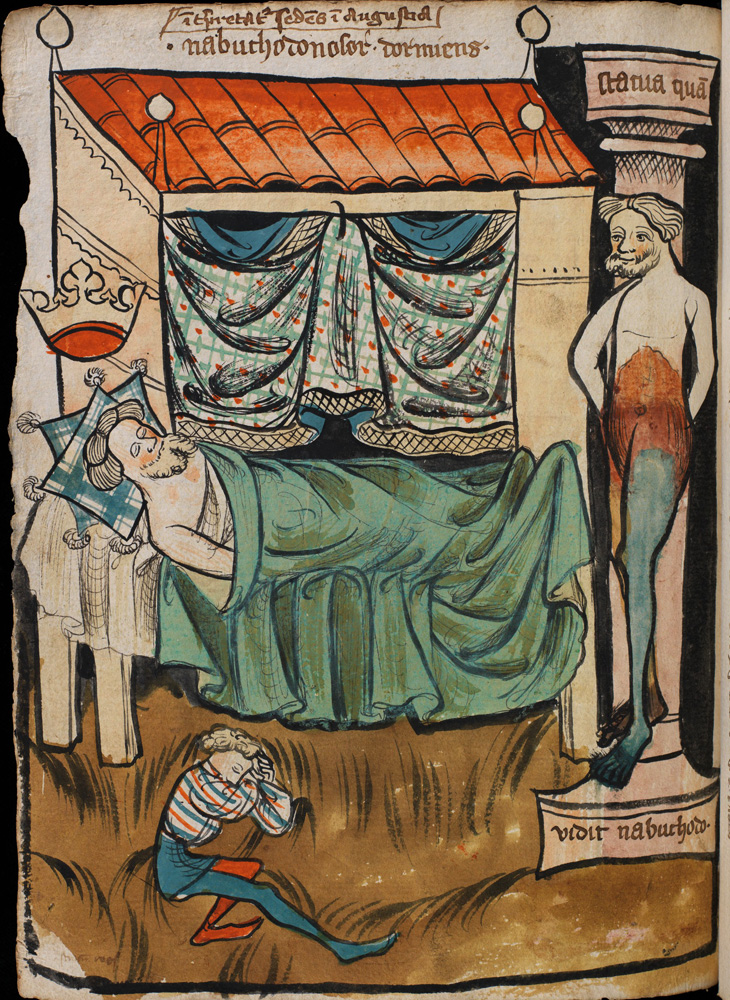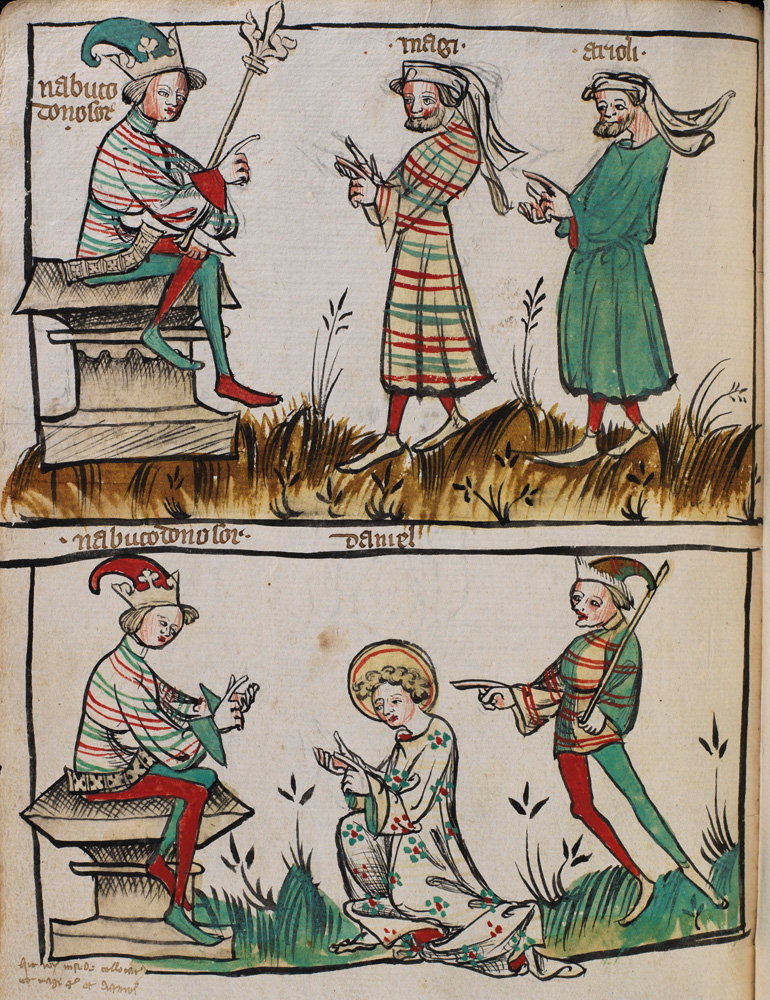Rüdiger Schopf, Nebuchadnezzar's Dream


1393
Ink on paper
Basel, Universitätsbibliothek, A II 5, 72v and 75v
The story is told in Daniel 2 and again in Daniel 4. King Nebuchadnezzar has a troubling dream but forgets the details when he awakens. None of his wise men can tell him what he dreamed, let alone what it meant, until Daniel is called in. He says the king dreamed of a statue with a head of gold, breast and arms of silver, belly and thighs of brass, legs of iron, and feet of clay. A stone came, struck the feet, and destroyed the statue. Daniel interprets the dream to mean that Nebuchadnezzar's kingdom will endure a number of changes until "the God of heaven will set up a kingdom that shall never be destroyed" (2:44). Daniel 2:19-23 explicitly credits God for revealing this interpretation to Daniel in a vision.
In the first illustration we see Nebuchadnezzar in his chamber having his dream of the statue. The person sleeping on the floor is presumably one of his body servants. The inscription on the capital and base of the statue's column is statua quam vidit nabuchodo[nosor], "the statue that Nebuchadnezzar saw." Above the roof of the chamber is the inscription nabuchodonosor dormiens, "Nebuchadnezzar sleeping."
Above that another hand has written what looks like interpretatio sedens in angustiis, literally "the interpretation sitting on narrowness" but probably meaning something like "the interpretation remains difficult."
A similar hand has written a note in the lower left margin of the second illustration. It appears to read hic rex iussit ut collocarentur et magi et et [sic] arioli, "Here the king orders that the magi and prophets be called together." The labels in the second illustration designate Nebuchadnezzar, Daniel, the magi, and the arioli ("prophets")* whom the king has called to interpret his dream. In the upper register they reply that they cannot. In the lower register the chief general Arioch introduces Daniel to the king as someone who can interpret the dream (2:24-25), and Daniel does so. Arioch's dignity as general is signified by his scepter and the fact that he wears the same red and green hose as the king and has a similar headpiece.
Speeches among the persons of this story are signified by hand gestures, which in all but Daniel's case involve pointing with the index finger. Daniel is seen instead counting on his fingers, which traditionally signifies that one is expounding on religious matters. (See this page for other examples.)
Read more about images of Daniel.
Source: e-Codices – Virtual Manuscript Library of Switzerland